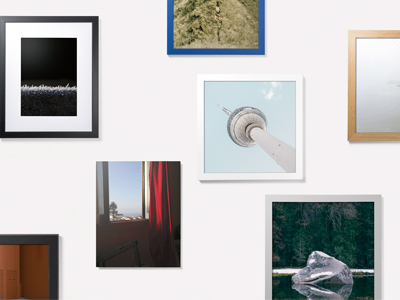Make Frame is a natural evolution for GF Smith
How did paper merchant GF Smith end up selling framed prints? Barney Cox found out.
Best known as a high end paper merchant that specialises in the more sensuous stocks, GF Smith’s launch of Make Frame, a printing and framing service using light sensitive photo paper, at first glance looks like an odd coupling. Compared to the wide range of printing papers, photo paper tends towards a bright white with a limited range of surfaces, typically a gloss and a satin.
Superficial appearances can be deceptive though. Behind the launch of Make Frame is an interesting backstory and a good example of how to add new products and services.
One for the album
The paper merchant has been making wedding albums for photographers at its site in Hull since the mid eighties. When a firm it supplied closed down GF Smith saw an opportunity to make the albums, so added a bindery, including foil blocking and debossing.
‘We’ve always offered conversion services and moving into albums seemed like a natural extension,’ says finance director Gareth Sheekey, who is also responsible for the photographic part of the business.
In the early days photographic prints were tipped in onto the pages. As photographic printing became digitised GF Smith switched to producing the books on photographic paper, buying an LED photo printer and the equipment to produce layflat bindings too. Looking for additional uses for that production capability led to the launch of Make Book, a photobook service available via its website, two years ago.
‘We had the capability to create beautiful books that combined the best of digital technology with craft to produce bespoke products,’ says Mr Sheekey. ‘That fits the GF Smith brand well, so we looked for other markets, which is how we came up with Make Book.’
The difference between Make Book and the wedding album service is that wedding albums use traditional materials such as leather, whereas Make Book uses the firm’s Colorplan papers. ‘The combination of the books and Colorplan is a logical tie up,’ adds Mr Sheekey. ‘We took products and skills that we had already and combined them. The digital meets craft element is very important. What we offer is unique in the weight of the pages and the use of Colorplan.’
Silver linings
One reason for the company to stick with photographic paper was to differentiate itself from customers using its papers.
‘We don’t print in a traditional sense and we have no desire to compete with our customers,’ says Mr Sheekey. Nor does he feel that photographic paper is a limitation, adding that: ‘there is a range of silver halide paper and it is continuing to grow.’
Once you understand the background it is easy to see the launch of Make Frame, as the next step from Make Book. The online service enables customers to select their image, size and framing style and order it for delivery within seven working days in 35 seconds. One of the framing styles, taking its cue from Make Book, uses Colorplan for the mount board. Make Frame also offers artists’ editions to buy as framed prints, initially using images from the recent Fine Collection project – a book of 66 images showcasing uncoated papers. The artists chose the frame, moulding and sizes that they wanted. The plan is to regularly add to the works available to buy.
While a paper merchant getting into the photo business seems like an odd coupling, in this instance it looks more like a perfect match.





